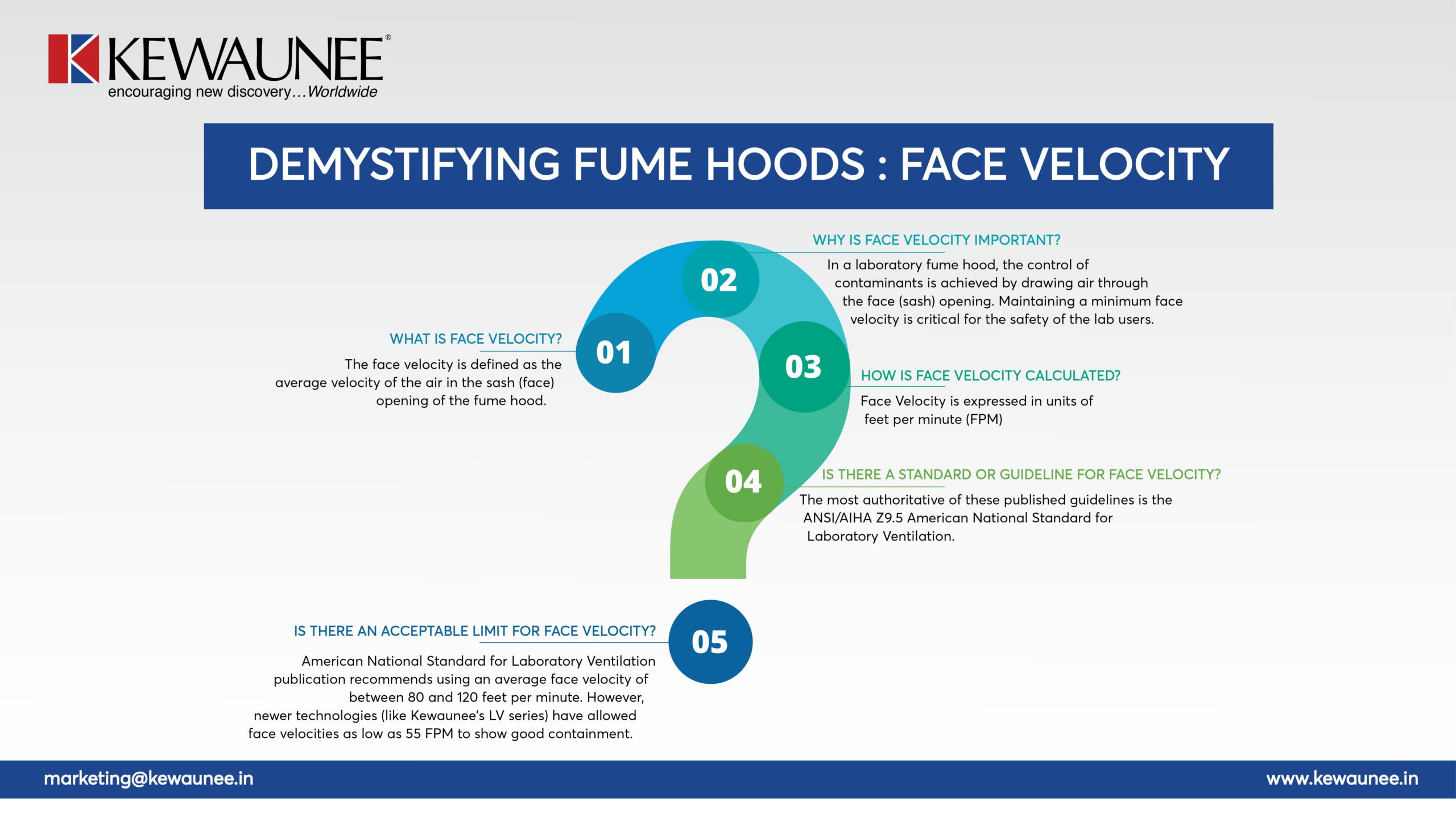Demystifying Fume Hoods Face Velocity
Infographic : Demystifying Fume Hoods Face Velocity
What is Face Velocity?
The face velocity is defined as the average velocity of the air in the sash(face) opening of the fume hood
Why is face velocity important?
In a laboratory fume hood, the control of contaminants is achieved by drawing air through the face(sash) opening. Maintaining a minimum face velocity is critical for the safety of the lab users.
How is face velocity calculated?
Face velocity is expressed in units of feet per minute(FPM).
Is there a standard or guideline for face velocity?
The most authoritative of these published guidelines is the ANSI/AIHA Z9.5 American National standard for laboratory ventilation.
Is there an acceptable limit for face velocity?
American national standard for laboratory ventilation publication recommends using an average face velocity of between 80 and 120 feet per minute. However, newer technologies (like Kewaunee’s Venturi series) have allowed face velocities as low as 60 FPM to show good containment.
Comments are closed.











